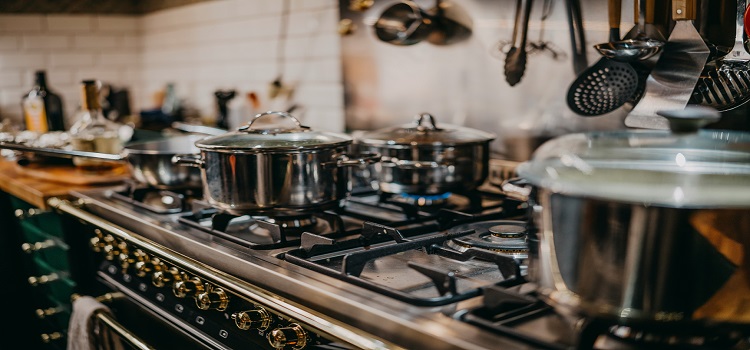As an Amazon Associate I earn from qualifying purchases.
Introduction:
Venturing into the world of pressure cooking for your veggies? Fantastic choice! Understanding how long to pressure cook carrots and potatoes can significantly streamline your meal prep while retaining their delicious flavors and essential nutrients. In this comprehensive guide, we’ll delve into everything you need to know to master the art of pressure cooking these versatile and nutritious staples.
Uses:
Pressure cooking carrots and potatoes unlocks a myriad of culinary possibilities:
- Incorporate them into hearty soups and stews to add texture and flavor.
- Create mouthwatering side dishes that complement any main course.
- Prepare comforting casseroles and bakes for a satisfying meal.
- Whip up creamy mashed potatoes and velvety carrot purees for a comforting treat.
- Enjoy them as standalone snacks or appetizers seasoned to perfection.
Benefits:
Pressure cooking offers a host of benefits for carrots and potatoes:
- Preserves nutrients: Pressure cooking locks in the natural flavors and nutrients of carrots and potatoes, ensuring they retain their nutritional value.
- Saves time: With significantly reduced cooking times compared to conventional methods, pressure cooking allows you to whip up delicious dishes in a fraction of the time.
- Enhanced flavor: The sealed environment of the pressure cooker intensifies the flavors of carrots and potatoes, resulting in tender, succulent, and deeply flavorful vegetables.
- Versatility: From soups to side dishes to main courses, pressure-cooked carrots and potatoes can be incorporated into a wide range of recipes to suit any palate.
- Convenience: Pressure cooking is a hands-off cooking method, allowing you to set it and forget it while you attend to other tasks, making it ideal for busy lifestyles.

How to Do It:
- Preparation: Start by washing and peeling your carrots and potatoes. For optimal cooking, chop them into evenly sized pieces.
- Layering: Add the chopped carrots and potatoes to the pressure cooker. Ensure they are spread out evenly to promote even cooking.
- Adding Liquid: Pour enough liquid into the pressure cooker to cover the vegetables. Water, broth, or vegetable juice can be used to enhance flavor.
- Seasoning: Add your desired seasonings to the liquid, such as salt, pepper, herbs, or spices, to infuse the vegetables with flavor.
- Pressure Cooking: Secure the lid of the pressure cooker and set it to high pressure. Cook the vegetables for the recommended time based on their size and desired texture.
- Releasing Pressure: Once the cooking time is complete, release the pressure from the cooker according to the manufacturer’s instructions.
- Testing for Doneness: Carefully open the lid of the pressure cooker and test the carrots and potatoes for doneness. They should be fork-tender and easily pierced.
- Draining and Serving: Drain any excess liquid from the vegetables and serve them hot as a delightful side dish or incorporate them into your favorite recipes.
FAQ:
- Q: How long does it take to pressure cook carrots and potatoes? A: Cooking times vary depending on the size and texture of the vegetables. Small pieces typically take 5 to 10 minutes, while larger pieces may require 10 to 15 minutes.
- Q: Can I cook carrots and potatoes together in the pressure cooker? A: Yes, both vegetables can be cooked together in the pressure cooker since they have similar cooking times.
- Q: Should I peel the carrots and potatoes before pressure cooking? A: Peeling is optional but recommended to remove any dirt or pesticides. It also ensures a smoother texture in the final dish.
- Q: Can I season the vegetables before pressure cooking? A: Absolutely! Seasoning the liquid before cooking allows the flavors to penetrate the vegetables, resulting in a more flavorful dish.
- Q: Can I cook frozen carrots and potatoes in the pressure cooker? A: Yes, frozen vegetables can be pressure cooked, but they may require slightly longer cooking times to ensure they are fully cooked.
- Q: Can I overcook carrots and potatoes in the pressure cooker? A: While it’s possible to overcook vegetables, pressure cooking reduces the risk since the cooking time is controlled and precise.
- Q: Can I use the natural release or quick release method for pressure cooking? A: Either method can be used, depending on your preference and the recipe. Natural release allows the pressure to dissipate gradually, while quick release releases the pressure immediately.
- Q: Can I add other vegetables or ingredients to the pressure cooker with carrots and potatoes? A: Absolutely! Feel free to experiment with different combinations of vegetables, meats, or grains to create unique and flavorful dishes.
- Q: Can I store leftover pressure-cooked carrots and potatoes? A: Yes, leftovers can be stored in an airtight container in the refrigerator for up to three days or frozen for longer-term storage.
- Q: How can I prevent the vegetables from becoming mushy? A: Be mindful of the cooking time and ensure you do not overcook the vegetables. Additionally, using larger pieces can help maintain their texture.
Conclusion:
Mastering the art of pressure cooking carrots and potatoes is a game-changer for any home cook. Armed with the knowledge of cooking times, methods, and tips provided in this guide, you’ll be well-equipped to create delicious and nutritious dishes with ease. So, fire up your pressure cooker and get ready to savor the mouthwatering flavors of perfectly cooked carrots and potatoes!
As an Amazon Associate I earn from qualifying purchases.
Leave a Reply